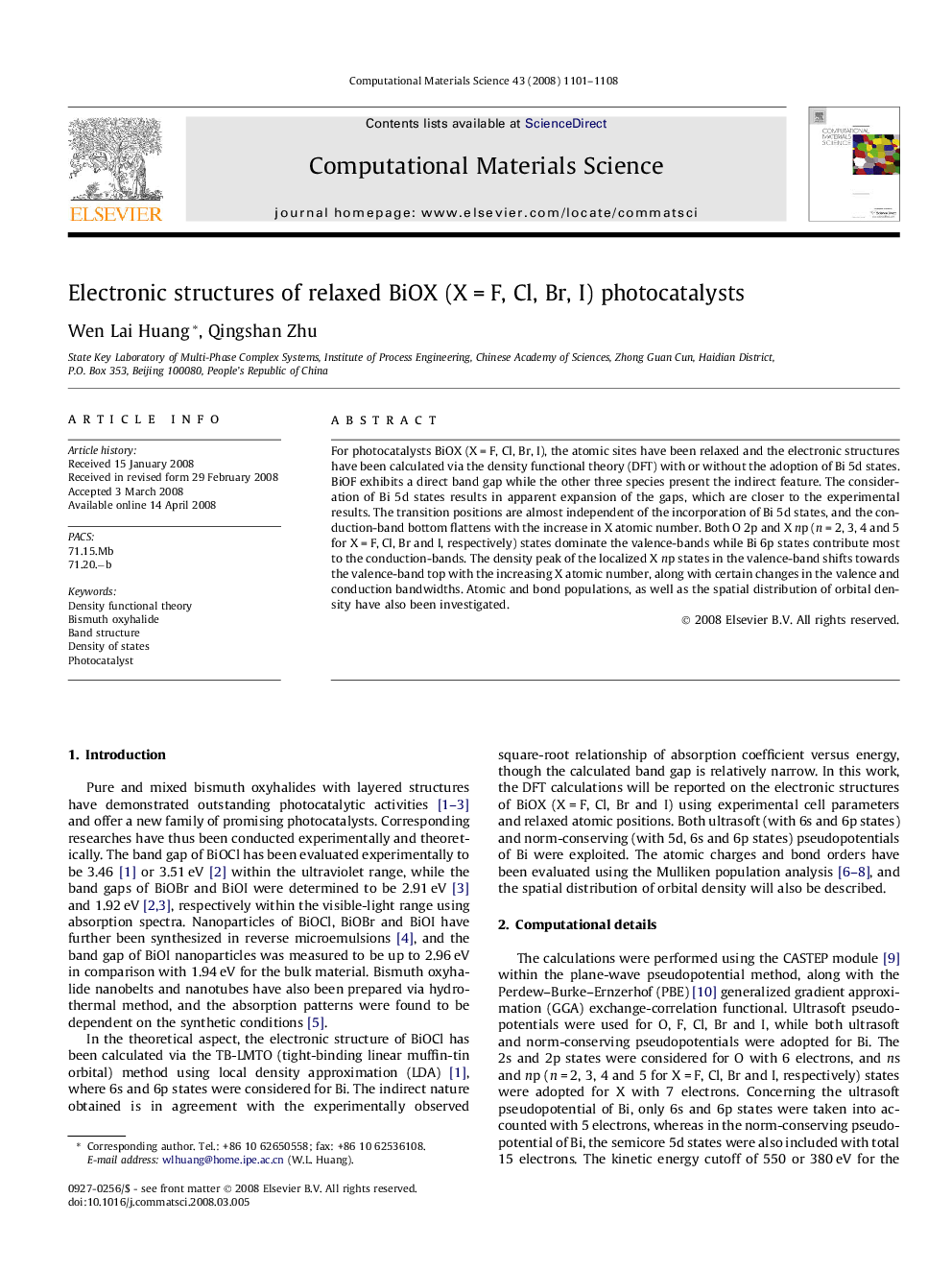| Article ID | Journal | Published Year | Pages | File Type |
|---|---|---|---|---|
| 1563332 | Computational Materials Science | 2008 | 8 Pages |
For photocatalysts BiOX (X = F, Cl, Br, I), the atomic sites have been relaxed and the electronic structures have been calculated via the density functional theory (DFT) with or without the adoption of Bi 5d states. BiOF exhibits a direct band gap while the other three species present the indirect feature. The consideration of Bi 5d states results in apparent expansion of the gaps, which are closer to the experimental results. The transition positions are almost independent of the incorporation of Bi 5d states, and the conduction-band bottom flattens with the increase in X atomic number. Both O 2p and X np (n = 2, 3, 4 and 5 for X = F, Cl, Br and I, respectively) states dominate the valence-bands while Bi 6p states contribute most to the conduction-bands. The density peak of the localized X np states in the valence-band shifts towards the valence-band top with the increasing X atomic number, along with certain changes in the valence and conduction bandwidths. Atomic and bond populations, as well as the spatial distribution of orbital density have also been investigated.
